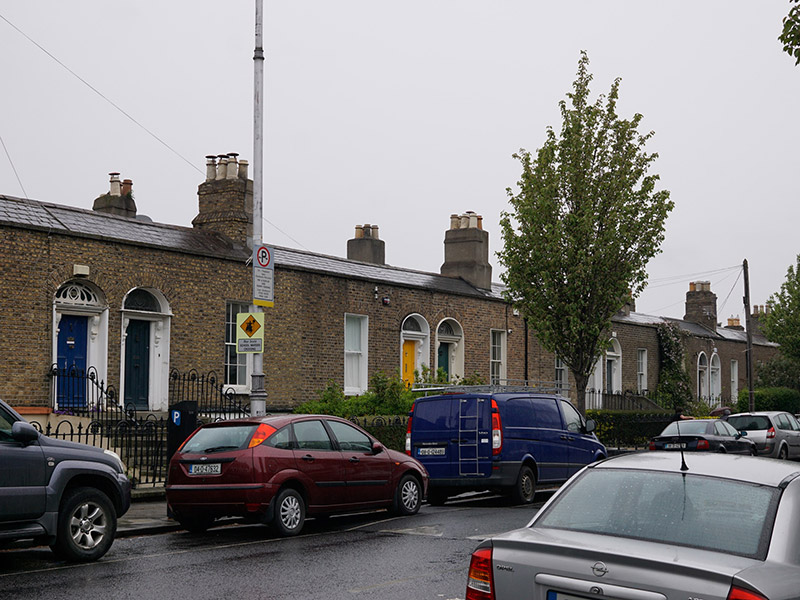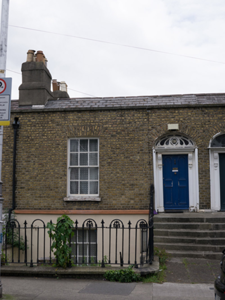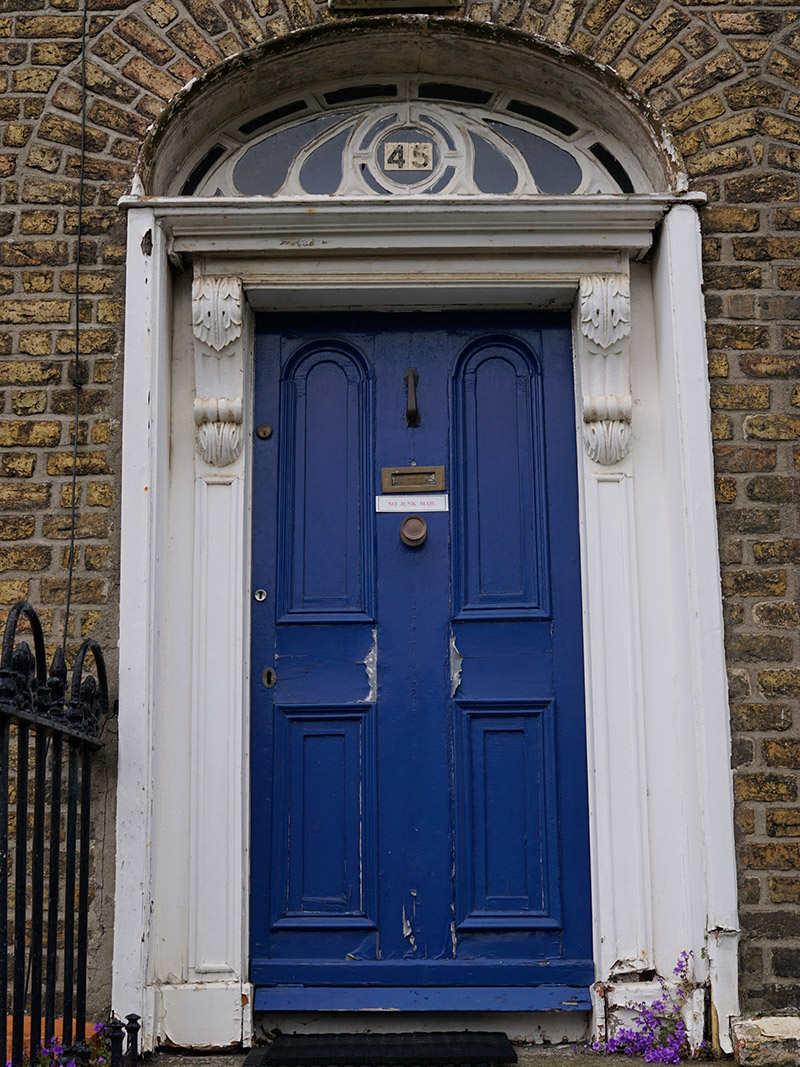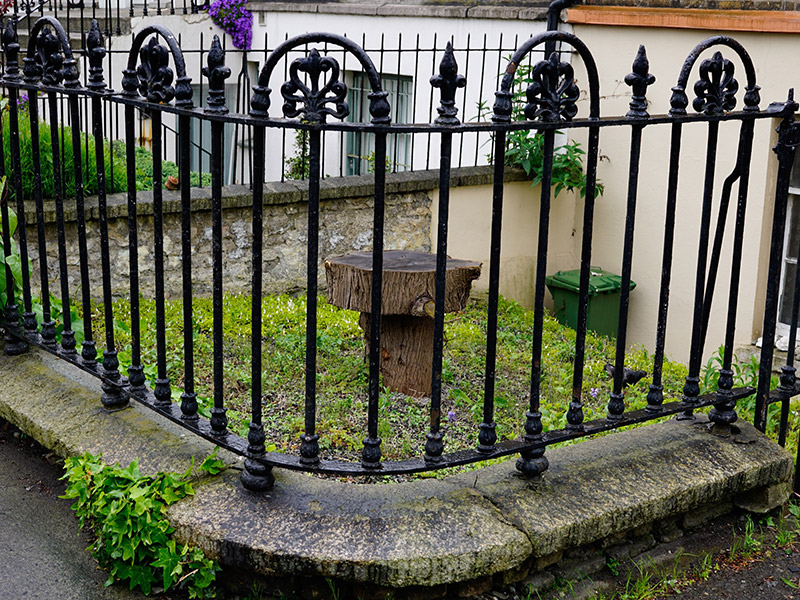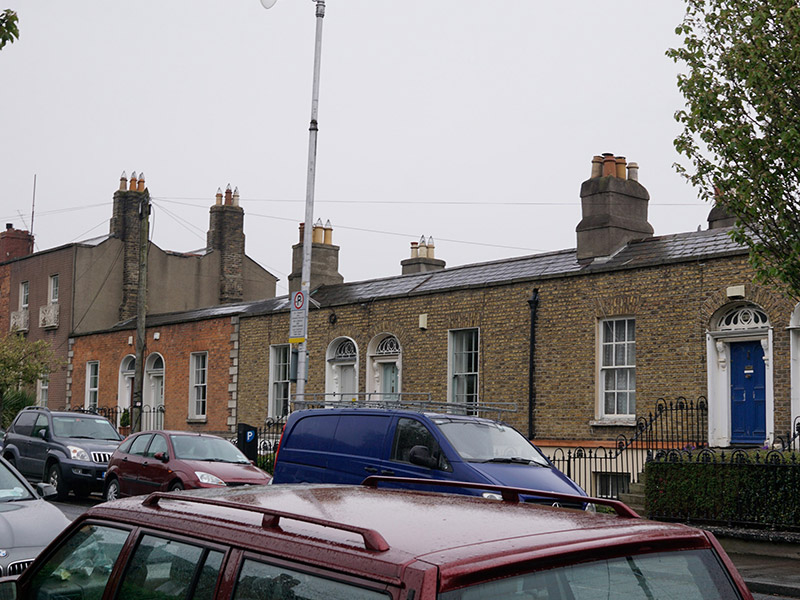Survey Data
Reg No
50110238
Rating
Regional
Categories of Special Interest
Architectural, Artistic
Original Use
House
In Use As
House
Date
1840 - 1860
Coordinates
315385, 232822
Date Recorded
30/04/2017
Date Updated
--/--/--
Description
Terraced two-bay single-storey house over basement, built c. 1850. M-profile pitched slate roof partially hidden behind brown brick parapet having granite coping, rendered chimneystacks with terracotta pots, and cast-iron rainwater goods. Brown brick, laid in Flemish bond, to walls, having masonry plinth course over rendered wall to basement. Square-headed window openings with granite sills, rendered reveals and six-over-six pane and three-over-six pane timber sliding sash windows. Elliptical-headed door opening having moulded render surround, doorcase comprising panelled pilasters, fluted console brackets with acanthus leaf detail. Teardrop fanlight and timber panelled door. Cast-iron bootscrape to platform, granite steps flanked by cast-iron railings with some fleur-de-lis and some honeysuckle finials, that enclosing basement area on rubble stone wall having cut granite capping.
Appraisal
This house retains a strong sense of its original character, through the retention of features such as a well-composed doorcase. Heytesbury Street, named after Baron Heytesbury, Viceroy 1844-6, was first laid out in 1846 and was nearing completion by 1861. The streetscape maintains a strong sense of historical character, with many houses, like this example, showing Greek revival details. The architects John Louch & Sons were offering sites for sale along this street 1854-1860, and it is possible that Louch, or one of his five sons, was involved in the design of this house.
